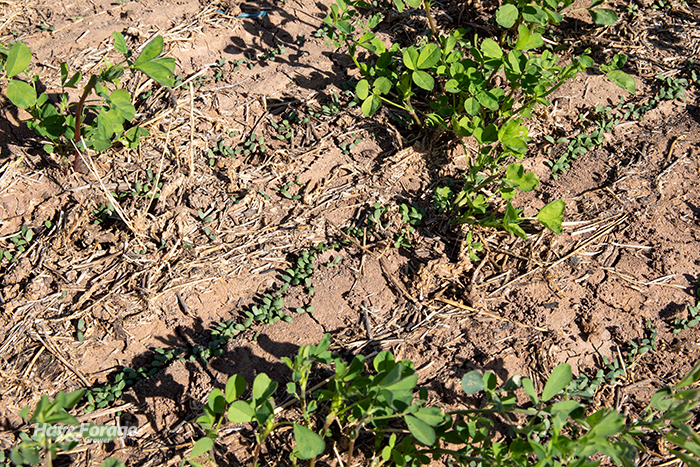
Although alfalfa has been grown and studied for many generations, there are still some mysteries surrounding the crop that continue to dog us. Specific knowledge of what conditions cause winterkill is one of those things that is still unknown. Another is what induces alfalfa autotoxicity.
“What we think we know is that a toxin is involved, and it’s concentrated in the leaves and flowers, with less of it in the stems and the roots,” Kim Cassida said during a presentation at the Midwest Forage Association’s Symposium in Wisconsin Dells, Wis., last month. The Michigan State University Extension forage specialist has been studying the problem for several years and recently received a large grant to continue in that pursuit.
The chemical compound responsible for autotoxicity is water soluble and disappears in the soil over time, but we don’t know exactly what it is. Likely, there’s more than one compound involved, Cassida noted.
“The practical implication of autotoxicity is that you can’t thicken a sparse alfalfa stand with alfalfa or come back to a field too soon and seed alfalfa where alfalfa was previously terminated,” Cassida said.
The forage specialist described another condition of alfalfa autotoxicity called autoconditioning or autosuppression. This is when seedling root systems are permanently damaged, but the plants still grow. Cassida said that although alfalfa plants may not die, their productivity is hindered and a farmer might not realize there’s a problem without a nontoxic field to compare it to.
Many factors are involved
Water and soil texture are factors that help govern the intensity of the autotoxic effect. The toxins are loosely bound to sand particles and more tightly held by clay. This means the toxins will leach out of a sandy soil faster, but they will also be more damaging to new seedlings soon after the termination of an existing stand. Other factors that have an influence on the degree of autotoxicity are tillage, the age and density of the terminal stand, and the alfalfa varieties used.
It's generally accepted that older alfalfa stands harbor more toxic compounds than younger ones. Cassida noted some classic University of Missouri research that showed new seedlings established within 8 inches of an existing alfalfa plant would likely die, and new alfalfa plants would be autoconditioned and suffer from low productivity up to 16 inches from the existing plant.
“The typical recommendation is to wait six to 24 months before reseeding alfalfa after alfalfa,” Cassida said. “Tillage can help dilute and break down the toxins.”
We need a test
Cassida lamented that it had always bothered her when a farmer asked if their field was safe to reseed to alfalfa and she couldn’t give a definitive answer. Several years ago, she started working on a procedure to determine a soil’s autotoxicity risk level.
The bioassay test proved successful in identifying soils prone to causing autotoxicity problems, but there were also hurdles. She had to find a protocol that would prevent seedlings from damping off and find a control variety that consistently exhibited autotoxic symptoms. One of the interesting findings to date has been the variation that exists among alfalfa varieties in terms of their susceptibility to autotoxic compounds.
While still working to perfect the best method for testing autotoxicity, Cassida said they recently started testing the effects of different soil sampling depths. Prior to this year, they had been sampling at a 6-inch depth, but their recent work has indicated that a shallower sampling depth might be more appropriate and revealing.
The bioassay test for alfalfa autotoxicity remains a work in progress. The forage specialist said she can definitely determine if a soil will be prone to alfalfa toxicity, but there are still too many false negative results. Cassida is hoping that shallower sampling will help eliminate this problem, so proofing continues.
With the new research grant dollars, Cassida said they have set their sights on trying to identify the culprit autotoxic compounds. They also want to discover if soil microbes play a role and identify the impact of legacy soil fertility. The forage specialist said that some of their previous work has suggested that autotoxicity may be amplified on low potassium soils. Finally, future research will explore breeding alfalfa varieties that aren’t susceptible to autotoxicity or don’t carry the autotoxic compounds.

